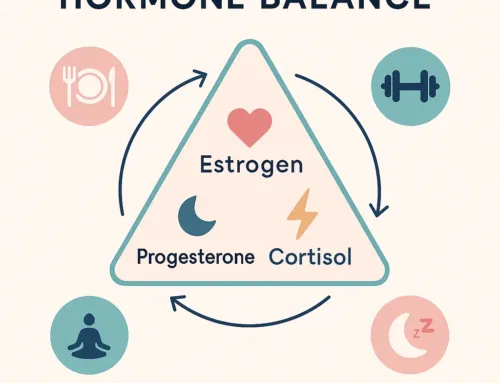
Approx. read time: 4.8 min.
Post: A1AT Deficiency
Understanding AAT Deficiency: Causes, Symptoms, and Emerging Treatments
Alpha-1 antitrypsin (AAT) deficiency is a genetic condition that can lead to serious lung and liver diseases. Characterized by insufficient production or improper folding of the AAT protein in the liver, this condition affects the body’s ability to protect organs from inflammation and damage. Below is a comprehensive guide to understanding AAT deficiency, its symptoms, diagnosis, treatment options, and tips for living with this condition.
What Is Alpha-1 Antitrypsin (AAT) Deficiency?
AAT deficiency is an inherited disorder caused by mutations in the SERPINA1 gene, leading to reduced levels or abnormal forms of the AAT protein. This protein is crucial for protecting the lungs from harmful effects of inflammation caused by irritants like smoke, pollution, and infections. The protein’s accumulation in the liver can also lead to liver damage and scarring, sometimes progressing to cirrhosis or liver cancer.
Key Facts:
- Affects approximately 1 in 2,500 individuals worldwide.
- Commonly linked to chronic obstructive pulmonary disease (COPD) and emphysema.
- Symptoms typically appear between ages 20 and 50 but can also affect newborns and children.
Symptoms of AAT Deficiency
Lung-Related Symptoms
- Wheezing or whistling sounds during breathing.
- Shortness of breath, especially during physical activity.
- Persistent cough with mucus (chronic bronchitis).
- Frequent respiratory infections or colds.
- Chest tightness.
- Reduced exercise tolerance.
- Symptoms of COPD or emphysema, such as difficulty pushing air out of the lungs.
Liver-Related Symptoms
- Yellowing of the skin or eyes (jaundice).
- Swelling in the abdomen or legs (edema).
- Unintended weight loss.
- Enlarged liver (hepatomegaly).
- Vomiting or coughing up blood (from liver complications).
- Pale, greasy, or foul-smelling stools (sign of poor fat digestion).
- Fatigue and low energy levels.
- Symptoms of cirrhosis, such as:
- Fluid retention in the belly (ascites).
- Bruising or bleeding easily.
- Itchy skin.
Symptoms in Newborns and Infants
- Prolonged jaundice after birth.
- Bright yellow urine.
- Difficulty gaining weight or thriving (failure to thrive).
- Pale, greasy, or foul-smelling stools.
- Enlarged liver.
- Bleeding from the nose or umbilical stump.
- Low energy and lethargy.
Rare and Systemic Symptoms
- Panniculitis: Inflammation of the fat layer under the skin, causing painful lumps, hardened skin, or patches.
- Pulmonary Hypertension: High blood pressure in the arteries of the lungs.
- Bronchiectasis: Chronic inflammation and infection leading to damaged airways.
- Fatigue or unexplained tiredness without lung or liver complications.
Rarely, AAT deficiency can also cause panniculitis, a skin condition characterized by painful lumps and hardened skin.
How Alpha-1 Affects the Liver
AAT proteins produced in the liver may not fold correctly, causing them to accumulate within liver cells. Over time, this can result in:
- Cirrhosis: Severe liver scarring that impairs liver function.
- Hepatocellular Carcinoma: A type of liver cancer.
- Liver Failure: A life-threatening condition requiring transplantation.
Diagnosing AAT Deficiency
A comprehensive diagnosis involves:
1. Physical Examination
- Doctors listen for wheezing or other lung abnormalities with a stethoscope.
2. Blood Tests
- AAT Levels: Measure the amount of AAT protein in the blood.
- Liver Function Tests: Evaluate how well the liver is working.
- Arterial Blood Gases: Assess lung function by measuring oxygen levels in the blood.
3. Genetic Testing
- Identifies mutations in the SERPINA1 gene.
4. Imaging Tests
- Chest X-rays and CT Scans: Reveal lung damage or emphysema.
- Liver Ultrasound or Elastography: Detect signs of liver scarring.
5. Pulmonary Function Tests (PFTs):
- Measure airflow and lung capacity to assess breathing efficiency.
6. Liver Biopsy:
- A small tissue sample is taken to confirm liver damage or cirrhosis.
Treatment Options for AAT Deficiency
Although there is no cure for AAT deficiency, several treatments can help manage symptoms and prevent complications:
1. Augmentation Therapy
- Weekly IV infusions of AAT protein sourced from healthy donors.
- Slows lung damage but does not reverse existing damage.
2. Medications
- Bronchodilators: Open airways to ease breathing.
- Oxygen Therapy: Provides supplemental oxygen to alleviate low blood oxygen levels.
3. Pulmonary Rehabilitation
- A program combining exercise, breathing techniques, and education to improve lung function and quality of life.
4. Lifestyle Changes
- Avoid smoking and exposure to lung irritants.
- Follow a balanced diet and exercise plan approved by a doctor.
5. Liver Treatments
- Vitamin supplements for liver health.
- Medications to manage itching, jaundice, or fluid retention.
- Liver transplant in severe cases.
Emerging Treatments
1. Recombinant AAT (rAAT):
- A newer technology aimed at producing AAT proteins using recombinant methods. Currently under research.
2. Inhaled AAT:
- Delivers AAT protein directly to the lungs via inhalers. Early studies show promising results.
3. Gene Therapy:
- Focuses on replacing faulty SERPINA1 genes with healthy ones to normalize AAT production.
4. Stem Cell Therapy:
- Replaces damaged cells with healthy stem cells from donors.
5. Small Molecule Therapy:
- Targets specific molecules to prevent protein buildup in the liver.
Tips for Living with AAT Deficiency
- Avoid Lung Irritants: Stay away from smoke, dust, and allergens.
- Prevent Infections: Wash hands often and stay up to date on vaccinations.
- Exercise Safely: Follow a tailored plan approved by your doctor.
- Manage Stress: Practice mindfulness, deep breathing, or journaling.
- Seek Support: Join a support group for emotional and practical advice.
Questions to Ask Your Doctor
- What treatments do you recommend for my symptoms?
- Should my family members be tested for AAT deficiency?
- Is augmentation therapy suitable for me?
- How can I monitor my lung and liver health?
- Are there any clinical trials I should consider?
The Future of Treatment
Although augmentation therapy is effective for severe cases, emerging therapies like gene therapy and inhaled AAT aim to provide more targeted, accessible, and cost-effective solutions. These advancements offer hope for better management and treatment of this lifelong condition.
Related Videos:
Related Posts:
Do I suffer from Alpha-1 Antitrypsin (AAT) Deficiency?
Understanding Fatty Liver Disease and the Role of Gut Health
Feeding Your Organs with Whole Foods: A Guide to Supporting and Healing Your Body Naturally
What Skin Issues Reveal About Your Internal Organ Health
How ChatGPT might help your family doctor and other emerging health trends









